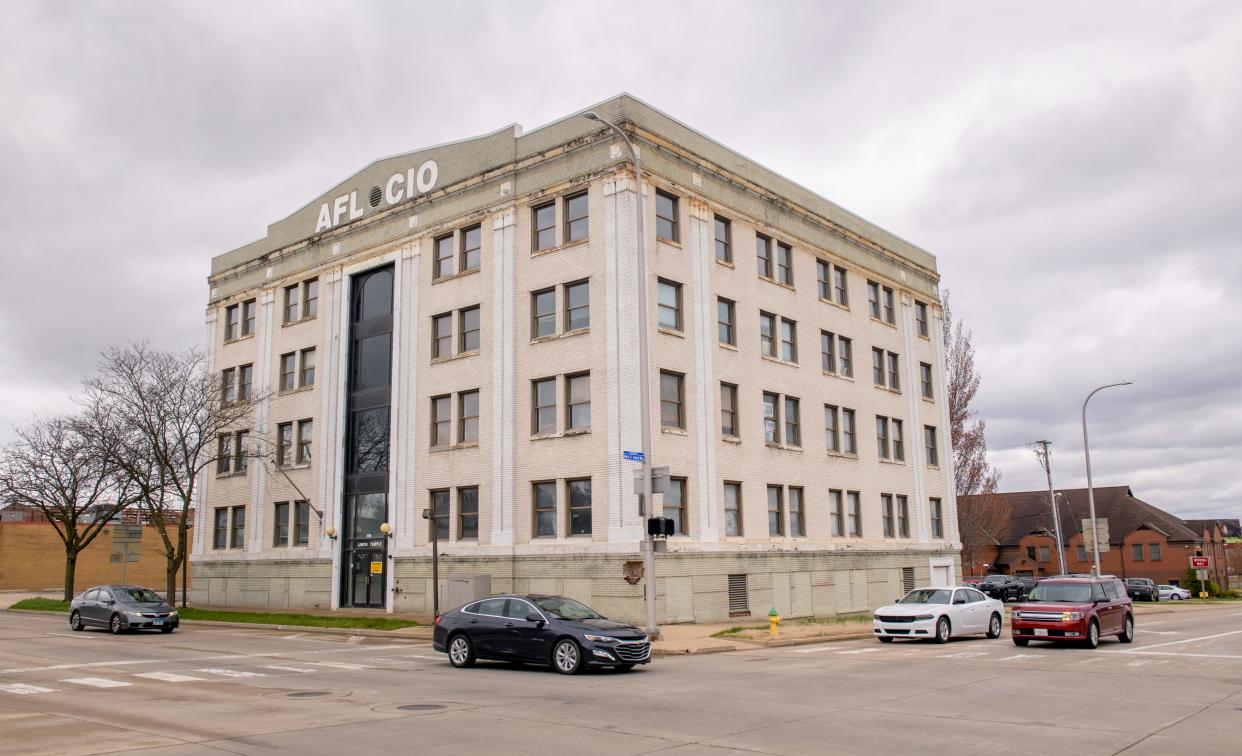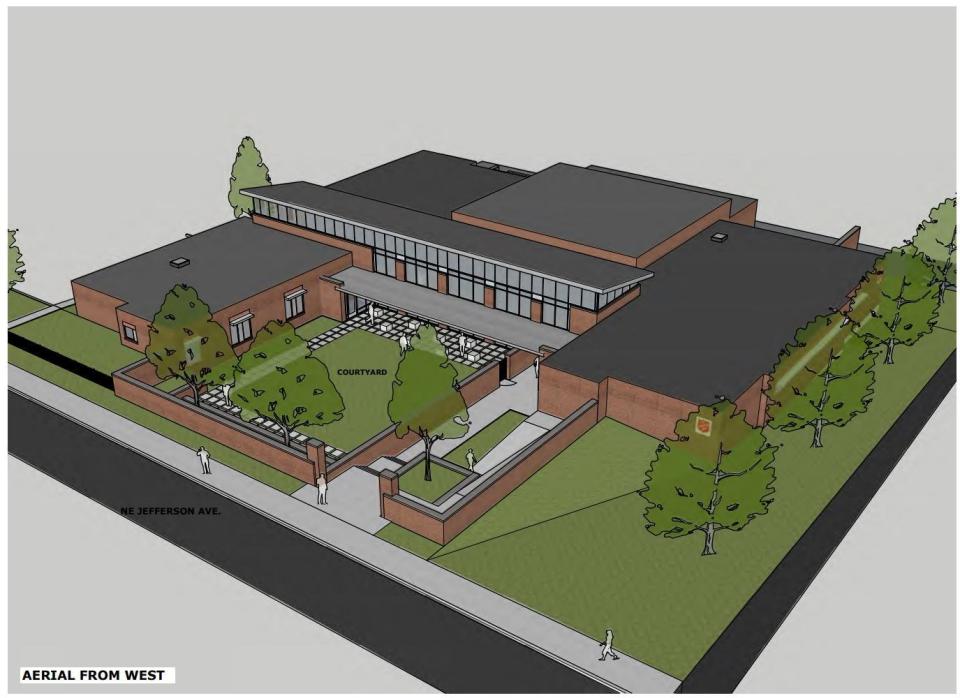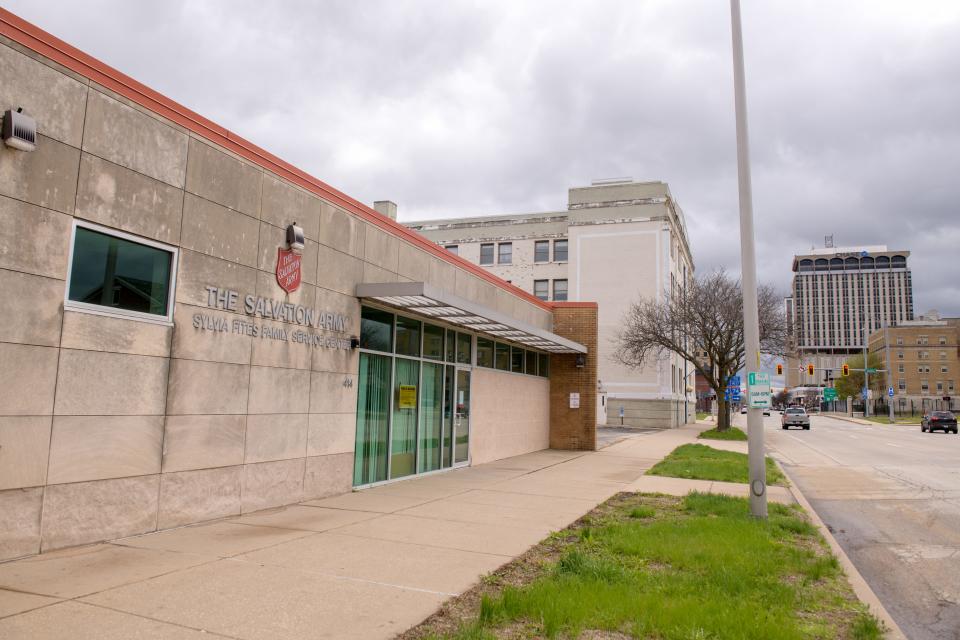Eyesore or historic? Decision looms on this nearly 100-year-old Peoria building

A proposal to tear down the nearly 100-year-old Labor Temple building to construct a new men's shelter near downtown Peoria will be voted on by the Peoria City Council on Tuesday.
The Salvation Army has proposed building a 13,400-square-feet, low-barrier men's shelter at the site of the empty Labor Temple on the 400 block of Northeast Jefferson Street.
The plan the City Council will review on Tuesday night is the same proposal approved by the Planning and Zoning Commission earlier this month. During its presentation to the Planning and Zoning Commission, the Salvation Army said the Labor Temple would be torn down and it was not salvageable.
"You probably know that the Labor Temple is an eyesore to our community as we speak, and it's only going to get better. Our plans for this entire campus — including with this building — will be for that to be razed and for the very attractive building, which you see in these conceptual designs, to be constructed," Salvation Army representative Craig Young told the commission on April 4.
Young told the Journal Star on Monday that the plan being presented Tuesday still includes tearing down the Labor Temple. He said the plan has not been finalized but added "in all candor, that is likely the plan" to raze the building.
"The answer to that is yes, that is what seems likely at this stage in our planning. The research we've done has not indicated any opportunity to rehab that building at all," Young said Monday. "So, while that seems likely, that final decision has not been made."
However, Young said Monday when asked what could change the plan to tear down the Labor Temple that it was hard to envision a scenario where the building is not demolished.
"I suppose some plan to build our new shelter somewhere else on this property might change that decision, but again, I don't know what use there would be for that building if that were to happen. It's hard for me to say," Young said. "There certainly are no plans that seem to be to be developing for us to do anything with that building other to tear it down, and I'd be hard-pressed to tell you what other eventuality could happen with that building that we would end up not building the shelter right there."

"The reality is, we've shared this block with organized labor for decades, and even organized labor made the decision a couple of years ago that that building was at the end of its life and they vacated it," Young said. "I think it's fair to say that even if we didn't do anything with that building, that it seems unlikely that any development on that spot would be anything other than tearing it down."
Young said it would be more cost friendly for the Salvation Army to build new rather than rehab the Labor Temple.
In interviews with other media outlets on April 5 after the planning and zoning meeting, Salvation Army Major Heath Sells told local television and radio stations that they had not decided to tear the building down yet and said the building could still be rehabbed.
The day after the planning and zoning meeting, Sells also told local media outlets they were going to be conducting walk-throughs of the Labor Temple building to decide the "best stewardship model" for the building.

However, when asked by a planning and zoning commissioner at the meeting if they had already conducted walk-throughs of the Labor Temple building to see if it had any salvageable value, the Salvation Army said they had done many walk-throughs, and the answer was "no" there was nothing of value of the building.
"Many walk-throughs, a number of architects going through it, obviously in addition to possible historic design — we didn't want to eliminate the possibility of a rehab of that building as opposed to a tear down and reconstruct. ... every opinion we received — and this was part of our due diligence in purchasing the building — is no, there is no historical value," Young told the commission on April 4. "I could walk you through it and you would agree."
Young went even further to tell the commission that when they bought the building they also checked to see if any of the historic woodwork inside had value.
"The answer to that is no, and the reason that probably is true is that when that building was vacated, I think they took anything with them that would have fit that criteria," Young told the commission on April 4. "We were sensitive to that and, quite frankly, from an altruistic standpoint, when you're talking woodwork and whatnot — no pun intended — would there be salvage value there once we own the building ... and we found there is not."
This article originally appeared on Journal Star: Peoria City Council to vote on plan to raze Labor Temple for shelter
